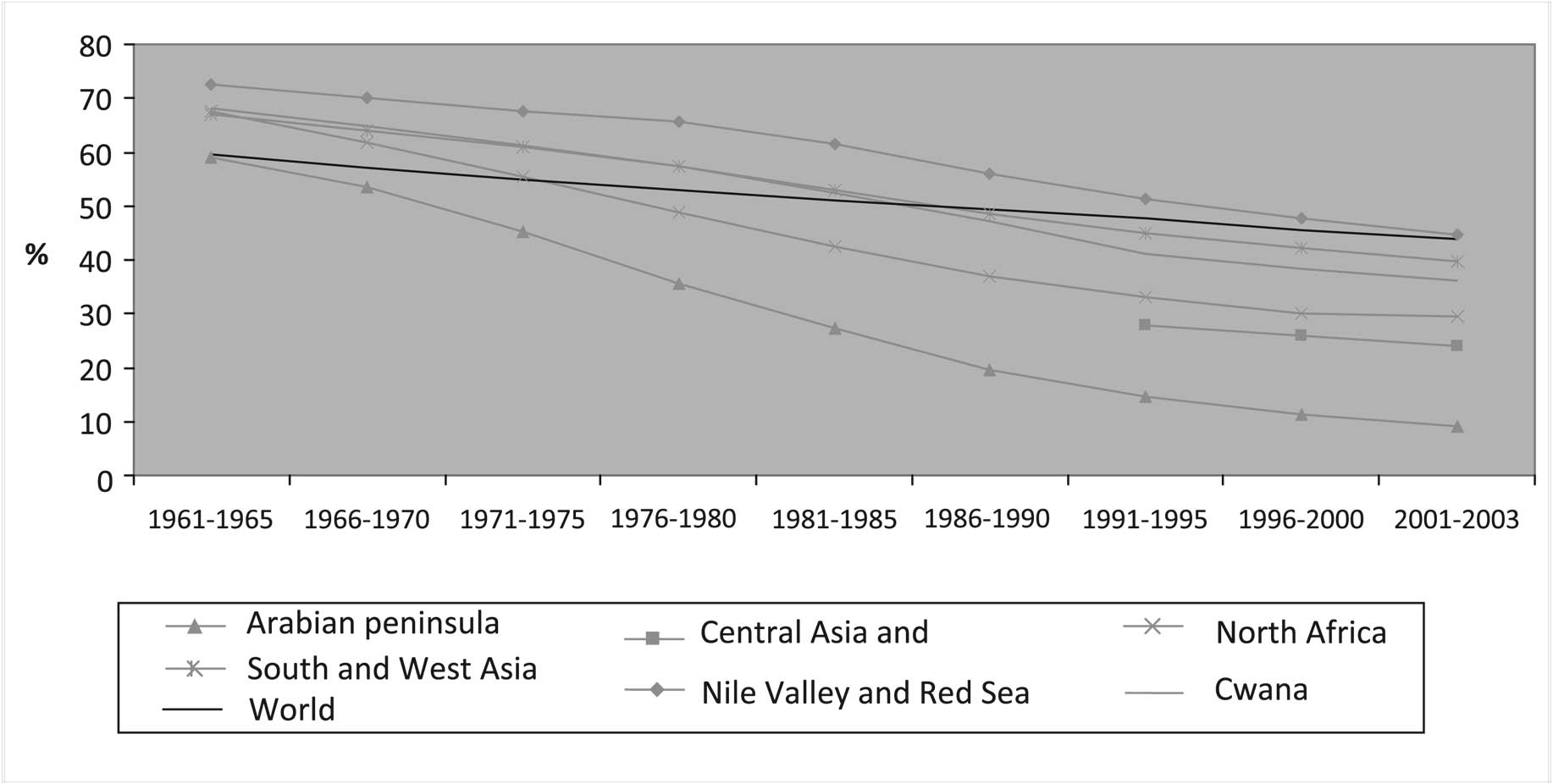
| Previous | Return to table of contents | Search Reports | Next |
| « Back to weltagrarbericht.de | ||
Historical and Current Perspectives of AKST | 65
|
porters. In addition, the many middlemen increase the price consumers pay for food, while farmers do not benefit. The penetration of large Western retailers is changing the domestic markets of developing countries (Reardon and Berdegué, 2002). Countries of CWANA are no exception to this new trend. Large-scale retailers bring their logistic services, and the effects within domestic markets are rapid and spectacular. The high volume and standardized products demanded by these large retailers rapidly transform the structure and functioning of the supply chains, and much consolidation happens amid the domestic wholesalers and retailers. Suppliers diminish in number and the small, family- owned, traditional grocery shops quickly disappear. Agrifood market institutions are greatly affected by the rapid rise in private standards and a gradual rise in contract use (FAO, 2004). 2.4.4 Labor market Rural to urban migration and urbanization in CWANA countries since the early 1970s changed the structure of labor markets considerably. The migration dropped significantly the percentage of the economically active population in agriculture (Figure 2-5). Even in the Nile Valley and Red Sea subregion, where the percentage of those active in agriculture is highest, the drop is considerable, an average of 72.6% from 1961 to 1965, 55.9% from 1986 to 1990 and 44.6% from 2001 to 2003. Central Asia and the Caucasus have 24% of the economically active population in agriculture and the Arabian Peninsula 9%. In North Africa, where rural-to-urban and cross-border migration is significant, the share of agriculture in the economically active population fell drastically, to less than 30%. In South Asia and West Asia this share is uneven from one country to another. In Afghanistan 66.3%, Pakistan 46.1% and Turkey 44.8% of the total economically active population was still occupied in agriculture in 2001 through 2003; in Lebanon only 3.2% for the same period. Another prominent point is the increasing participation of women in economic activities in this region. The |
average for the economically active female population in the total economically active population for CWANA was around 33% for 2001 through 2003, while the world average was around 41%. However, there are important differences from one subregion to another and from one country to another. Central Asia and the Caucasus 46.9%, Egypt 45.7%, Mauritania 47.6% and Somalia 43.4% have ratios above the world average. Turkey has around 38%. In other CWANA countries the share of economically active women is between one-quarter and one-third of the total population. These two trends affect the overall labor supply growth figures. These figures continue to grow at high rates, reflecting high population growth, inflows from rural-to-urban migration and increasing female economic participation (Tzannatos, 2000). However, the urban formal sector is not sufficiently developed to absorb this labor excess because of the slow industrial growth rate. Informal activities are the largest source of income for the recently urbanized populations (Tzannatos, 2000). This large shift from high-paying formal jobs to low-paying informal jobs reduces the income of recently urbanized households considerably. A vicious cycle is in place; less educated people are employed only informally, diminishing household income and giving less chance for their children to become well educated and attain higher-paying formal jobs. These negative trends are accentuated by macroeconomic changes in most of these countries. In some Arab countries relying on oil exports, the decline in oil prices during the 1980s negatively affected the investments in these countries. In Algeria, Egypt, Morocco, Turkey and Central Asian countries the retirement of the public sector from economic activities negatively affected public employees. Last but not least, after the Iran-Iraq and Gulf wars, countries with significant out-migration, Egypt, Jordan and Turkey, faced falling demand for their citizens abroad. Remittances and social compensations from workers in Western Europe and oil-rich Arab States declined in Algeria, Mauritania and Sudan and stagnated in Turkey. This result hurt the purchasing power of many urban and rural households in |

Figure 2-5. Share of economically active population in total economically active population. Source: FAO database
| Previous | Return to table of contents | Search Reports | Next |
| « Back to weltagrarbericht.de | ||